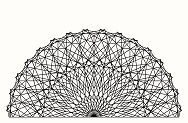


 |
 |
 |
Phenotypic variation means visible differences are produced from the same DNA. That's because some genes are turned off, and some turned on, to create different expressions. Each type of tissue is a phenotypic variation from the same DNA, but different genes are turned on and off. There are also different phenotypes for individuals of the same species or group. Differing phenotypes are a method of coping with requirements that differ or environments that rapidly change. Scientists know that phenotypes exist for some effects, but they don't realize the role of phenotypic variation as an adaptation mechanism. Horticulturists see the result. When they plant seeds, they get a variety of phenotypes; so they know they have to use cuttings to get the same phenotype each time. Each seed creates a different phenotype. Phenotypic variation as an adaptation mechanism is so extreme with the morel mushroom that it creates a clear example of the process and its necessity in coping with varying environmental conditions. This type of variation is used by all species for rapid adaptation where genotypic variation would be too slow. Reproduction, as shown with flowers, is designed to produce the most rapid genotypic adaptation possible, but it is not fast enough for some conditions; so phenotypic variation is used where genotypic variation would be too slow such as seasonal variations. Yeasts need highly varied phenotypic variation because of their restricted genotypic variation. Ascospores which form within cells and are not easily disseminated. The morel mushroom evolved from a yeast emerging from the ground only 20 thousand years ago, and it needs extreme phenotypic variation (at least under harsh conditions) for the same reason as yeasts—its ascospores do not easily disseminate to produce genotypic variation.
If there are 50 alleles with three variations each, the total options might be 350 = 7 x 1023. Actually, the spores are formed in identical pairs, and each spore produces a mycelial mass which can produce more than one identical mushroom. The morel also shows how phenotypes cope with environmental adversity. To get its ascospores emitted, the morel must dehydrate causing the tissue to shrink and create a propelling force. But if the tissue dries to early, the spores cannot form. It takes two or three days for spores to form requiring well hydrated tissue, and then the tissue must rapidly dehydrate and get spores out in less than about three to five days before residual autolysis causes deterioration of tissue and invasion by gram-negative bacteria. The weather is not highly obliging. So the morel uses slow drying phenotypes which are better for dry conditions and fast drying phenotypes which are better for wet conditions. The slow drying phenotypes have thick tissue and closed cell construction. The fast drying phenotypes have thin tissue and open cell construction. Various combinations of morphological characteristics are produced to cope with the problem.
The morel is so restricted in getting its spores out that it cannot survive through more than one ice age cycle without evolving into a cup fungus. There are two cup type mushrooms (Discina leucoxantha and Disciotis venosa) which would have evolved from the morel line in previous ice age cycles, as their spore surface is said to have the same fingerprint identities as the morel. The cup shape produces rapid drying around the rim and slow drying near the ground. In between, tissue is supposed to dry at just the right rate. But it is a losing battle with ascospores (enclosed within the tissue), which would be the reason why there are not older mushrooms with ascospores. Some ascosporogenous molds have an older evolutionary age, but they found a stable niche to adapt to. All species use phenotypic variation as a method of coping with rapidly changing environmental conditions. The test of phenotypic variation is random distribution through a population. The cumulative effect of phenotypic variation is adaptation by multiple options, where the cumulative effect of gene exchange is adaptation by improved function. Multiple alleles on chromosomes are used to create phenotypic variation. Different alleles are turned on and off during gene exchange. Scientists have known for a long time that multiple alleles exist, but they didn't know why. Creating varied phenotypes is why. Morel mushroom scientists separated the enzymes of the TCA system and found three to five allotypes for each enzyme. So they tried to use the results of taxonomic purposes, which of course didn't work. They didn't know that the enzyme allotypes were creating phenotypic variation, which cannot serve for taxonomic purposes, because variation is within species. In other words, scientists have not grasped the role of phenotypic variation in biology. A highly visible example of phenotypic variation as an adaptation mechanism is in the Elm tree. Some elms form flowers in early April, some in late April and some in May. It seems strange that there would be so much difference in plants which would have to be genotypically the same. Only after studying phenotypic evolution in morels did I realize that Elms were producing varied phenotypes to cope with seasonal variations. Elms need to get seeds produced early, because the seeds are soft and need to germinate before hot and dry weather inhibits growth. But early flowers can be destroyed by frost; so some trees form flowers later. Humans have both fast muscle cells and slow ones. Each person has a different combination. The combination is scrambled randomly through the population rather than distributed through Mendelian lines of descent, which means they are phenotypic variations. The slow muscle cells are needed for endurance, so I suspect they were derived from Neanderthals who needed endurance for mountainous and snowy conditions in northern Europe. Prairie Wildflowers Prairie wildflowers produce a lot of phenotypic variation due to harsh conditions. It takes a lot of physiological variation to deal with variation in environmental conditions. The variation has to be phenotypic when conditions change too rapidly for genotypic adaptation. Echinacea grows in the most inhospitable environments on the prairies, often where little else is growing due to hard or gravely soil. A hard stem and cone gives it resistance to whipping grass which stips off leaves and flower petals. The extreme difference in flower petals shows its extreme tendency to produce phenotypic variation.
Field bindweed shows several variations in flower color and shape. These variations make the flowers more visible to insects when there are various background colors, since the weed mixes into other types of vegetation.
|
|
|||||||||||||||||||||||||||||||||||||||||||||||
 |
 |
 | ||
 |
 |
 |
||